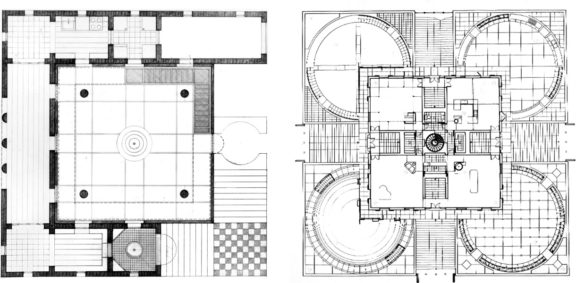
A new monograph of Machado & Silvetti’s work begins with an introduction by Nader, who studied under Jorge and Rodolfo at the GSD. Below are excerpts from Nader’s introduction, his full introduction can be read HERE. The print monograph can be purchased online HERE from Oro Editions.
“Interpreting architecture is a sufficiently complex task, but reading into a work that has so deeply biased one’s own education, practice, and pedagogy is altogether another challenge. Such is the Oedipal anxiety I confront in returning to the work of Machado and Silvetti. Thus, rather than claim neutrality here, I want to acknowledge a motivated project, even if I bring to it a different cultural backdrop, generational perspective, and personal viewpoint. Suffice it to say that while this book contains a vast retrospective of their designs, it by no means completes their story. If much remains for them to build on, there is even more that others, like myself, will be contributing to their project through our own speculations.”
 above: Djerba House by Silvetti and the Country House by Machado
above: Djerba House by Silvetti and the Country House by Machado
“Among the myriad writings on typology of this period, the significance of Machado and Silvetti’s contributions lay in the idea that architecture is a cultural practice, and therefore immersed in systems of representation and engagement with a larger public. As such, while they adopted types as a convention for establishing continuity, they did not idealize them. Types, for them, did not have the authority of propriety, but instead were cultural matter as mutable as they were meaningful in their ability to transmit change. In this regard, Machado and Silvetti’s work also explicitly challenged the avant-garde notion of the ‘new’, which is invariably and repeatedly absorbed, consumed, and normalized in the digestions of the cultural process.”
 above: Asian Art Study Center at the Ringling Museum of Art
above: Asian Art Study Center at the Ringling Museum of Art
“The transformation of Machado and Silvetti as a firm into a builidng practice produced a meaningful shift from their academic work. With a small set of commisssion in the 1980s and early 1990s behind them, winning tje Getty Villa competition and embarking on the design of its expansion in 1994 enlarged the office tenfold. It also required the partners to translate their conceptual and theoretical priorities for a broader cohort. Their baggage of professional experiences would catapult them into new possibilities for materializing complex assemblies, in some instances; but it would also be a sober reminder of how the industry predetermines the vast set of questions and specifications that go into building processes. Balancing out the relationship between the customized and the generic, the theoretical premises of the figural and the configurative helped Machado and Silvetti to set certain priorities within each project.”
Comments Off on Machado & Silvetti: A Selective Biography